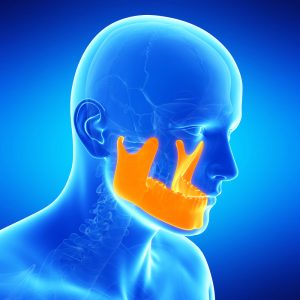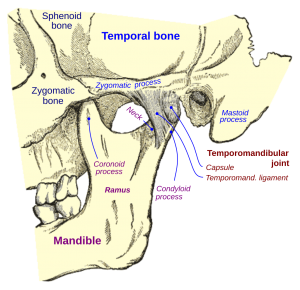Do you have jaw pain or trouble chewing? You're not alone. Many people have TMJ disorders. This can hurt a lot and make daily life hard.
Orthotic devices might help. They are made to ease TMJ pain and make your mouth healthier. Learning about these devices is a good first step to a happier smile.
Key Takeaways
- Orthotic devices help alleviate TMJ pain and discomfort.
- They are designed to improve oral health and overall well-being.
- Using orthotic devices can enhance your quality of life.
- These devices are a possible solution for TMJ disorders.
- Understanding orthotic devices is key to making informed decisions about your oral health.
What Is a Dental Orthotic and How Does It Work?
Dental orthotics are special devices made just for you. They help fix teeth and jaw problems. They give relief from many dental issues.
Definition and Basic Functions
Dental orthotics are special tools for your teeth and jaw. They are made just for you. They solve your dental problems in a special way.
They do many things:
- Correcting bite issues
- Relieving jaw pain
- Reducing teeth grinding and clenching
- Improving overall oral health
They make your life better by fixing these problems.
The Science Behind Dental Orthotics
The science of dental orthotics is about your jaw's mechanics. It affects your dental health. Dental orthotics move your jaw to a better spot.
This helps with TMJ/TMD, bruxism, and other dental issues. Wearing one can ease pain and discomfort. It makes your mouth healthier.
Types of Dental Orthotic Devices
There are many dental orthotic devices to choose from. They help with different oral health problems. This includes issues like jaw pain, teeth grinding, and sleep apnea.
Occlusal Splints and Bite Guards
Occlusal splints and bite guards fix tooth and jaw alignment problems. They ease jaw muscle and joint pain. This brings relief from discomfort.
Mandibular Advancement Devices
Mandibular advancement devices move your lower jaw forward. This keeps your airway open while you sleep. They're great for sleep apnea and snoring.
Night Guards for Bruxism
Night guards protect your teeth from grinding and clenching. This is called bruxism. Wearing a night guard stops tooth wear and damage.
Repositioning Splints for TMJ
Repositioning splints treat TMJ disorders. They move your jaw to a better position. This helps with jaw pain, clicking, and limited movement.
Each device has its own purpose. They can be made to fit your needs. Talk to a dental professional to find the right one for you.
Common Conditions Treated with Dental Orthotics
Dental orthotics are special devices for many dental problems. They are made just for you to fix tooth and jaw issues. They help with pain and make eating easier.
Temporomandibular Joint Disorders (TMJ/TMD)
TMJ/TMD hurts the jaw and face. It makes chewing and smiling hard.
Symptoms and Diagnosis
TMJ/TMD signs are jaw clicks, pain, and headaches. A dentist will check and might use X-rays to find out.
How Orthotics Help
Orthotics move the jaw right. This lessens pain and strain on the jaw joint.
Bruxism (Teeth Grinding and Clenching)
Bruxism means grinding teeth, often at night. It wears down teeth and hurts the jaw. Night guards protect teeth and ease jaw pain.
Sleep Apnea and Chronic Snoring
Sleep apnea and snoring are fixed with special devices. These devices push the jaw forward, keeping airways open.
Malocclusion and Bite Issues
Malocclusion means teeth don't line up right. Orthotics guide the jaw for better bite and look.
Orthotics help a lot with dental treatment and dental solutions. They ease pain, improve sleep, and make eating better. Dental orthotics are very helpful.
The Benefits of Using Dental Orthotic Devices
Dental orthotics can really help your mouth and life. They fix many dental problems. They protect your teeth and jaw.
Pain Relief and Management
Dental orthotics help with pain. They ease pain from TMJ/TMD and bruxism. Wearing one makes daily tasks easier.
Improved Sleep Quality and Reduced Fatigue
They also help you sleep better. For those with sleep apnea, they keep the airway open. This means better sleep and less tiredness during the day.
Protection of Dental Work and Tooth Structure
They also protect your teeth. Night guards stop teeth grinding. This saves your teeth and keeps your smile bright.
Dental orthotics have many benefits. They improve your mouth health and life. Knowing their benefits helps you choose the right dental care.
The Process of Getting Fitted for a Dental Orthotic
Learning about dental orthotics can make you feel better. It helps you know what to expect. The steps include talking to a dentist, getting fitted, and follow-up visits.
Initial Consultation and Assessment
First, you'll talk to a dentist. They will check your teeth and jaw. They'll see if a dental orthotic is right for you.
Customization and Fitting Procedures
Next, they'll make a special device for you. They'll take pictures or scans of your teeth.
Digital Scanning Methods
Digital scanning uses a 3D scanner. It's fast, comfy, and very accurate.
Traditional Impression Techniques
Or, they might use a soft material to make a mold. This method works well, but some find it less comfy than digital scanning.
Adjustment Period and Follow-up Appointments
After getting your orthotic, you'll need time to adjust. Your dentist will check on you. They'll make sure you're okay and the fit is right.
Knowing these steps helps you feel ready for your dental orthotic. It makes sure you get a good fit and feel comfortable.
Caring for Your Dental Orthotic Device
How well you care for your dental orthotic device matters a lot. It helps your device work right and last longer. Just clean it every day and know when to get a new one.
Daily Cleaning and Maintenance
Cleaning your device every day stops bacteria and plaque. This keeps it clean and helps your mouth stay healthy.
Recommended Cleaning Products
Use a soft-bristled toothbrush and mild soap to clean your device. Don't use harsh chemicals or rough stuff that could hurt it.
Cleaning Routine
Brush your device gently every day. Rinse it well with water and let it dry. This keeps it clean and safe.
When and How to Replace Your Device
It's key to know when to get a new device. It might wear out or not fit right anymore. See your dentist often to check if it's time for a new one.
A dental orthotic device might need to be replaced every 1 to 5 years. This depends on the material and your mouth. Your dentist will tell you when it's best to get a new one.
Choosing the Right Dental Orthotic for Your Needs
Choosing a dental orthotic device means knowing what you need. There are many devices for different oral health problems. It's important to pick the right one for the best results.
Consulting with Dental Professionals
Talking to dental professionals is key. They check your mouth, find problems, and suggest the best device for you.
- Dentists give advice based on your mouth's health.
- They find the main cause of your mouth problems.
- They help you pick a device that works well and feels good.
Factors to Consider When Selecting a Device
Think about a few things when picking a dental orthotic device.
- How bad your mouth problem is.
- What kind of device fits your condition best.
- What you like and what feels comfortable.
Over-the-Counter vs. Custom-Made Options
Deciding between an OTC or custom-made device is important. OTC devices are easy to find and cheaper. But, custom-made ones fit better and work better for specific problems. Choosing between OTC and custom-made devices should be with a dentist's help. They make sure you get the right one for you.
Conclusion
Dental orthotic devices offer effective relief for a range of issues such as TMJ/TMD, bruxism, and sleep apnea. From reducing pain and preventing dental damage to improving sleep quality, these devices can be a vital part of your oral health plan.
Options like occlusal splints and night guards can be tailored to your specific needs. By incorporating a dental orthotic, you’re taking a step toward better health, comfort, and quality of life.
For expert care and personalized treatment, trust Raleigh Facial Pain Center—your partner in long-term oral wellness. Contact us today to schedule a consultation and find the right dental orthotic solution for you.
FAQ
What is a dental orthotic device?
A dental orthotic device is a special appliance made just for you. It helps with jaw problems, teeth grinding, and sleep issues. It changes how your jaw or teeth sit.
How do I know if I need a dental orthotic device?
You might need one if you have jaw pain or teeth grinding. If you wake up tired or have jaw clicks, talk to a dentist. They can help figure out if you need one.
What types of dental orthotic devices are available?
There are many kinds, like occlusal splints and night guards. Each one helps with different dental problems.



